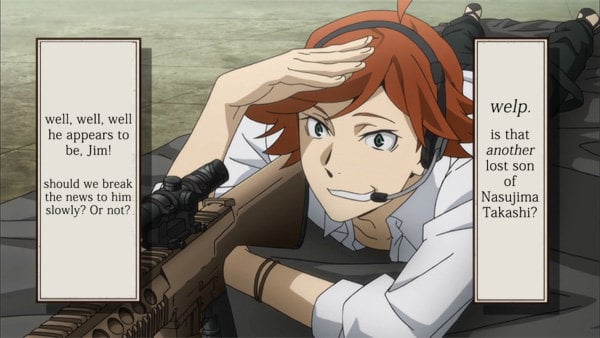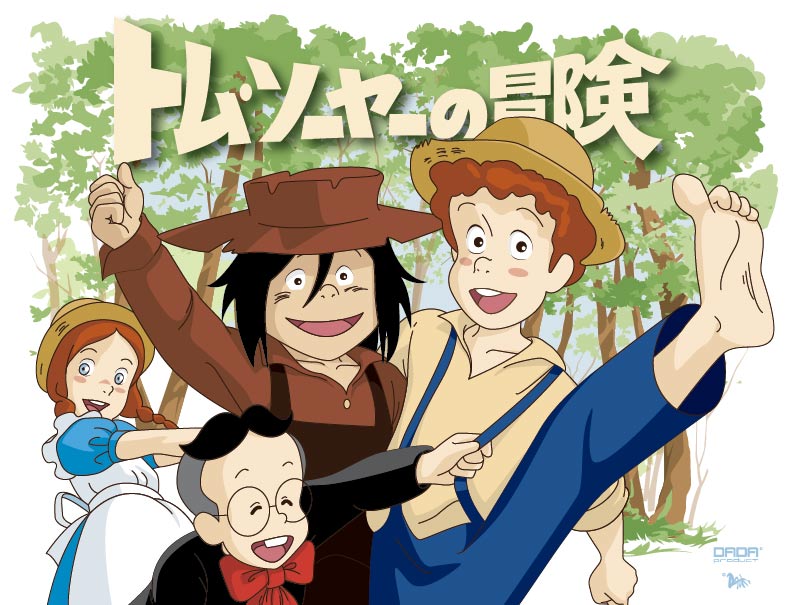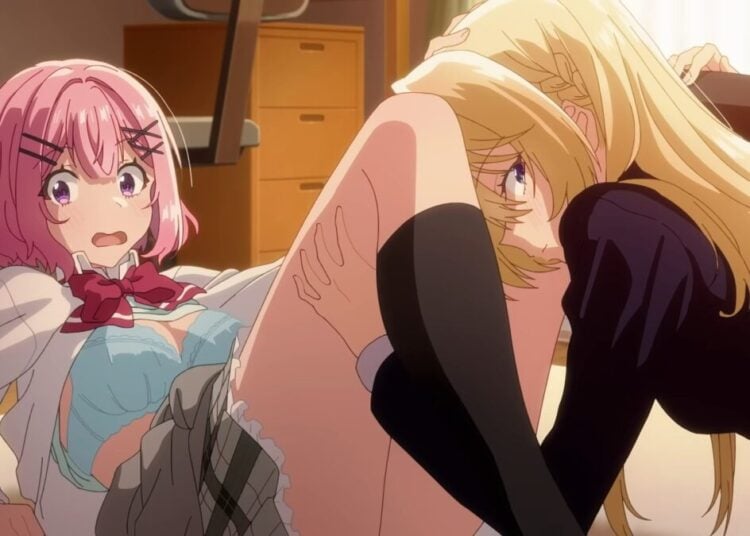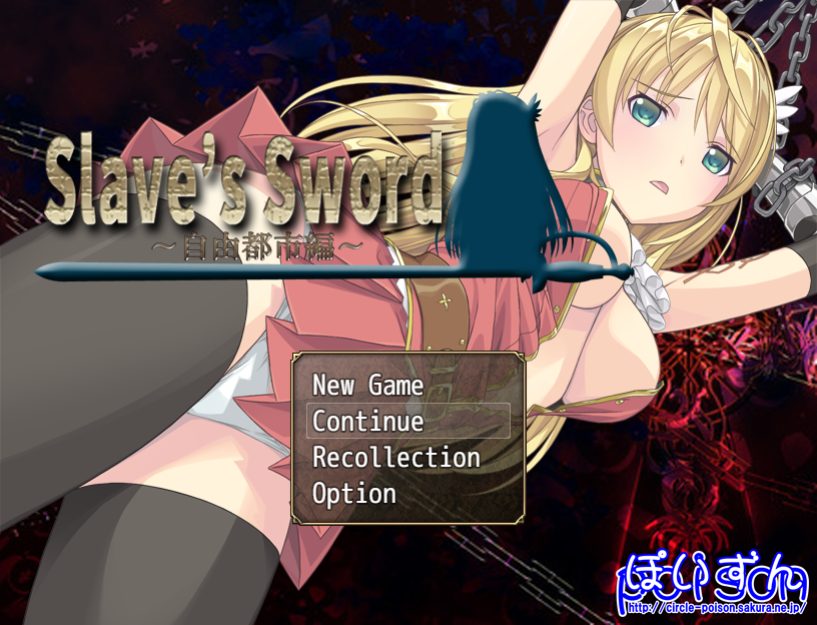The isekai genre has become a fixture of anime lately, taking its place alongside sports, mecha, harem, slice-of-life and idol anime as a major category of entertainment for fans. There are so many isekai anime that it can be hard to tell the really outstanding ones (Re:Zero, KonoSuba, The Rise of the Shield Hero, Zero no Tsukaima, No Game No life, Overlord, Outbreak Company, Gate, The Devil is a Part-Timer, Drifters, Magical Knights Rayearth, and Sword Art Online) from the less-good ones (In Another World With My Smartphone, Master Of Ragnarok, Blesser Of Einherjar, or the innovative but oddly paced Re:Creators). One of the best isekai anime in years was That Time I Was Reincarnated as a Slime, which just ended, so I thought I’d do a post about the genre and where it all came from.
The isekai genre didn’t originate in Japan, and there are many beloved stories that incorporate the basic idea of a character or characters being thrown into a bizarre fantasy world where they must think fast to survive and prosper. The Wizard of Oz. The Lion, the Witch and the Wardrobe. Peter Pan. And the oldest of them all, Alice in Wonderland.
In the context of Japan, the first isekai story is probably the 700-year-old Urashima Taro, a classic fairy tale about a fisherman who goes to live in an undersea palace where his every wish is provided for him, but when he returns to his village he finds that 300 years have passed. (This story is woven into our hentai visual novel Little My Maid.) In the anime world, the genre got started in the early 80s with titles like Aura Battler Dunbine and Super Dimension Century Orguss, though it wouldn’t come into its own until the light novel boom that got started in the 1990s.
But I wanted to examine Mark Twain’s A Connecticut Yankee in King Arthur’s Court, and why Mark Twain invented isekai anime, thanks to this book.

What is an Isekai Anime Story?
But first, let’s define the elements of a modern isekai story. It must obviously involve a character or characters who find themselves, through some supernatural mechanism — being summoned, transferring to the new dimension through some unexplained plot point, or dying and being reborn — in a mysterious another world, usually with Western fantasy elements. The isekai genre also generally includes:
- a “generic” MC who the audience can identify with closely, allowing them to insert themselves into the story vicariously if they choose to
- knowledge of the modern world and/or fantasy games bring easy benefits to the MC, either allowing him to easily achieve an elevated status (as in Outbreak Company) or be in outright “God mode” (as in Slime)
- more advanced technology can also provide a massive advantage for the MC’s side, as in Gate
- often being the “chosen one” called to fulfil some destiny or pilot some legendary mecha, as in Rayearth
- a harem of cute girls, because why not?
The genre is popular because, like anime itself, any kind of story can be told, and stories of heroic warriors banishing their enemies to win the hearts of elf princess are inherently a lot of fun.
A Connecticut Yankee in King Arthur’s Court
I read Mark Twain’s 1889 novel about a Yankee engineer from Hartford, Connecticut named Hank Morgan, who receives a blow to the head and somehow finds himself teleported in time and space to the court of King Arthur, where he’s able to set himself up as a famous magician, making many changes to feudal England thanks to his knowledge of engineering and technology as well as enlightened American ideals of Republicanism and capitalism.
Right off the bat, all the expected elements of an isekai story are here. He just happens to remember the date of an upcoming eclipse and is able to pretend that he caused it through his magical powers. Merlin becomes his adversary, and time and time again the MC is able to prove his “magic” through knowledge of gunpowder, lightning rods and how pumps work. He starts coining money to allow the economy to grow, starts a chain of schools teaching modern technology, and strings up telephone wires from London to Camelot. He also pushes back against the sins of the day: slavery, monarchy, empty chivalry, belief in superstitions and the power of the Catholic church of the era.

One of the most important elements in isekai is the ease with which the main character is able to gain the upper hand in his new environment through his knowledge of the modern world, and nearly every isekai anime makes use of this vehicle. The hero of That Time I Was Reincarnated as a Slime is so powerful, he can devour dragons, demon lords, and even cleanse people’s sins by eating them. He’s so wise, he can create a perfectly ordered society where everyone can live together in absolute harmony, something that’s proven impossible in our world. The dude is basically more powerful than God.
This element is also a part of A Connecticut Yankee in King Arthur’s Court, as the hero has little difficulty in quickly becoming the “Boss” of all England because of his Yankee ingenuity and wisdom, allowing him to introduce concepts like American egalitarianism to the people, though they’re usually not ready for it. The MC doesn’t acquire a harem — though Mark Twin apparently did — but he does marry a Brienne of Tarth-esque female knight and have a daughter with her named “Hello-Central,” which is some kind of hilarious 19th-century telephone humor lost on us today.
Did you agree with my theory, that Mark Twain invented isekai anime? Got any other theories or ideas? Let us know in the comments, or on Twitter!





![Sawaranaide Kotesashi Kun Episode 12 [END] Featured Image](https://blog.jlist.com/wp-content/uploads/2025/12/Sawaranaide-Kotesashi-kun-Episode-12-END-Featured-Image-750x536.jpg)











